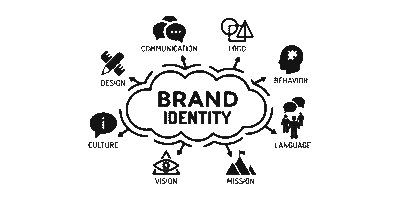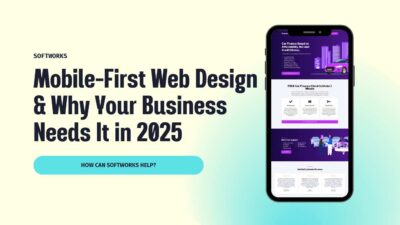Introduction to the Perfect Website Checklist
A well-designed website is essential for establishing a strong online presence, fostering user engagement, and achieving organizational goals. This checklist serves as a comprehensive guide to help identify the critical components that contribute to the success of a website. Using this resource ensures attention to detail, minimizes missed opportunities, and optimizes the user experience.
Each element of the checklist addresses specific aspects of website performance, design, and functionality. From creating visually appealing layouts to implementing seamless navigation, this guide equips businesses and individuals with actionable insights. With this framework, users can craft a website that effectively balances user expectations and business objectives.
Responsive Design and Mobile Optimization
Ensuring a website is responsive and optimized for mobile is critical in today’s digital landscape. A responsive design allows the site to adapt seamlessly across various screen sizes, including smartphones, tablets, and desktops. Mobile optimization goes beyond responsiveness by fine-tuning elements like navigation, loading speed, and user experience for smaller screens.
Key features include:
- Fluid grids to ensure layouts adjust proportionally.
- Touch-friendly navigation for easier usability on mobile devices.
- Prioritization of content to display essential information prominently.
- Compressed images and minified code to improve loading speeds.
With mobile traffic surpassing desktop use globally, a site’s responsiveness directly impacts engagement and search engine rankings.
Fast Page Load Speeds: Why It Matters
Fast page load speeds are a crucial factor in website performance and user satisfaction. A slow-loading website can frustrate visitors, driving them to competitors and reducing overall engagement. Search engines also consider speed as a key ranking factor, meaning slow websites may experience diminished online visibility.
Key reasons for prioritizing speed include:
- Improved User Experience: Visitors expect pages to load quickly; delays of even a few seconds can lead to higher bounce rates.
- Higher Conversion Rates: Faster websites are more likely to convert visitors into customers.
- Better SEO Performance: Search engines favor fast-loading sites, improving rankings.
- Mobile Optimization: Mobile users commonly experience slower connections, making speed even more essential.
Every second counts in leaving a strong impression.
SEO-Driven Content and Keyword Strategy
Developing an SEO-focused content strategy is essential for driving organic traffic and boosting search engine rankings. Businesses must research primary and secondary keywords relevant to their audience, using tools like Google Keyword Planner or SEMrush. These keywords should be naturally integrated into page titles, headers, meta descriptions, and throughout the content.
High-quality, valuable content tailored to user intent ensures engagement and retention. Structured data, internal linking, and optimized images further improve search visibility. Regularly updating content to reflect current trends or information keeps it relevant. Consistent tracking of performance metrics and keyword rankings helps refine strategies for better results.
User-Friendly Navigation and Clear CTAs
A well-structured website design ensures users can effortlessly locate the information they need. Intuitive navigation should include a logical menu structure, descriptive labels, and minimal clicks to reach key pages. Avoid overcomplicating the design by cluttering it with excessive links or excessive dropdown menus.
Clear calls-to-action (CTAs) serve as essential signposts that guide users toward desired actions, such as signing up for a newsletter or making a purchase. CTAs should be strategically placed, visually distinct, and contextually relevant to their surrounding content. Combining user-friendly navigation with direct, actionable CTAs enhances usability while improving engagement and conversion rates.
Secure Hosting and SSL Certificates
Secure hosting and SSL certificates are essential for protecting user data and maintaining website integrity. Hosting should be reliable, offering security features such as firewalls, DDoS protection, and regular backups. It is advisable to choose hosting providers with proven uptime records and advanced protective measures.
SSL certificates encrypt data transmitted between the website and its users, safeguarding sensitive information like passwords and payment details. Websites with SSL display a padlock icon and use “https” in their URLs, instilling trust in visitors. Many hosting providers include SSL certificates in their plans, making implementation seamless.
Neglecting these features can lead to security breaches and damage to credibility.
Analytics and Performance Tracking
Implementing analytics tools is essential for understanding user behavior and optimizing website performance. These tools enable the collection of data on page views, traffic sources, session durations, bounce rates, and user demographics. Platforms like Google Analytics or Hotjar provide insights into which pages attract the most traffic and how users interact with the site.
Performance tracking ensures a website remains fast and responsive for all users. Tools such as Pingdom or GTmetrix can analyze load times, identify bottlenecks, and recommend improvements. Regularly monitoring these metrics helps to enhance user experience, support SEO strategies, and achieve business goals effectively.
Conclusion and Final Thoughts
To ensure a successful website, focusing on the essentials is crucial. Throughout the checklist, it becomes evident that every element serves a vital purpose in creating a seamless user experience and driving desired outcomes. From intuitive navigation to responsive designs, each feature works collectively to meet the demands of modern users.
Maintaining consistency and accessibility should remain at the forefront of web development strategies. Insights derived from analytics assist in refining content, design, and functionality for continual improvement. By adhering to proven principles and adapting to evolving trends, a website can achieve long-term growth, relevance, and user satisfaction.
Get a Custom Website for Your Business Optimized With Best Practices Today!
🚀 Whether you need a business website, eCommerce store, or a powerful web app, Softworks is your trusted web development & design partner!
📞 Let’s Discuss Your Project – Contact us today!
🔗 Visit: getsoftworks.com
📩 Email: [email protected]
📞 Call: +91 94297 85533
💡 FAQs – Web Development Services
❓ How much does website development cost?
Pricing depends on features, complexity & design. Contact us for a custom quote!
❓ How long does it take to develop a website?
A simple business website takes 2-4 weeks, while advanced projects take longer.
❓ Do you provide SEO services with website development?
Yes! All our websites are SEO-optimized to help you rank higher on Google.
❓ Can I get an eCommerce website with payment gateway integration?
Absolutely! We build fully secure, scalable eCommerce websites with payment gateways.





